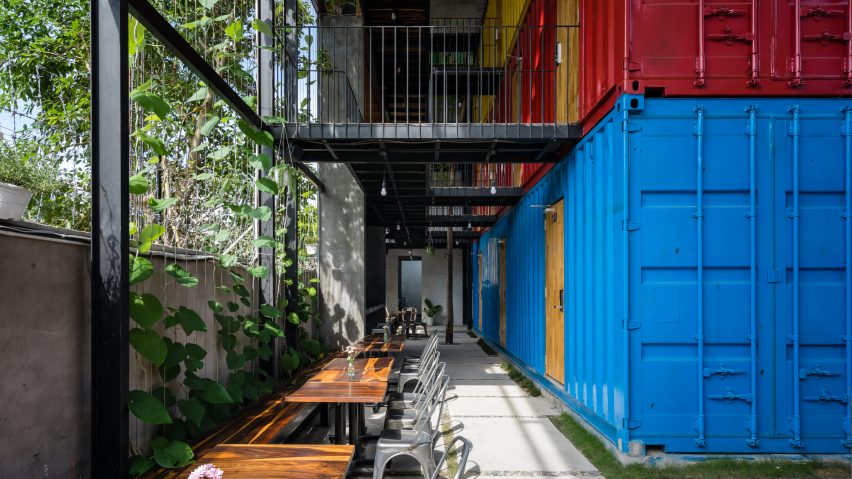
Stacked shipping containers house bedrooms at Vietnam hostel by TAK Architects
Brightly painted shipping containers are stacked one on top of the other to house bunk beds at this hostel in Nha Trang, which also features aerial bridges and giant communal hammocks.
The Ccasa Hostel was designed by local studio TAK Architects for a site around three kilometres from the centre of the coastal resort city, and just a few minutes' walk from the beach.
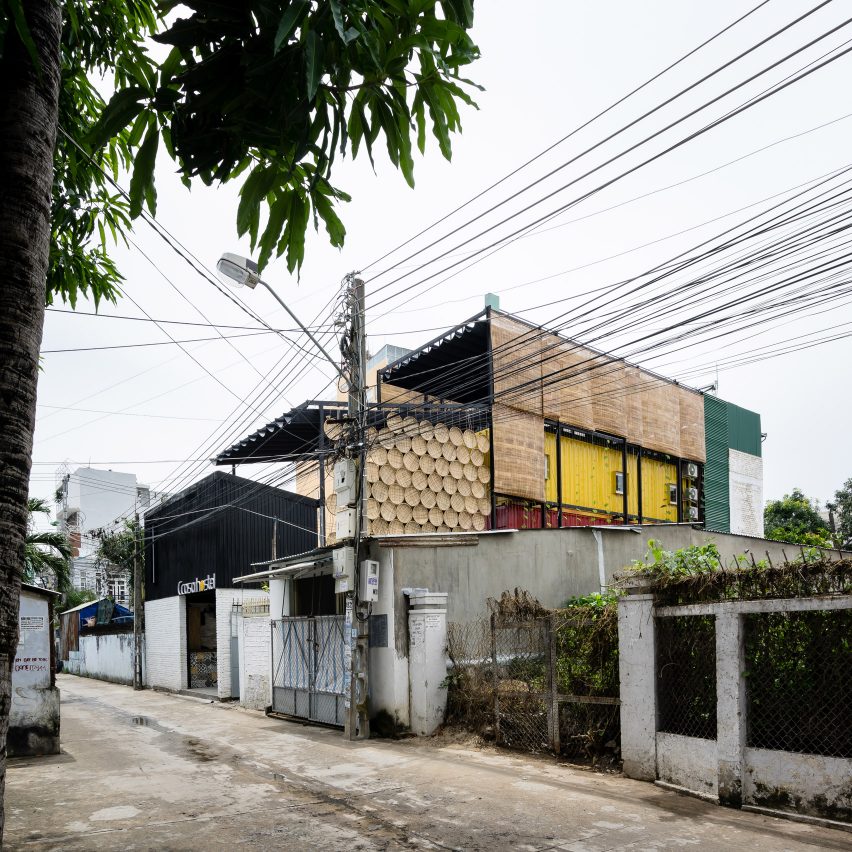
Occupying a plot of just 195-square-metres, the hostel is separated into different functional zones that reflect the organisation of a typical Vietnamese courtyard home.
"Ccasa is built to function like a family house with cabin beds inside containers as bedrooms, a shared area as a kitchen and living room, roof terrace as play room, and washing area as toilet and bathrooms," explained the architects.

Arranging the beds inside stacked shipping containers – painted red, blue and yellow to distinguish the different room types – meant a large socialising area for guests could also be included.
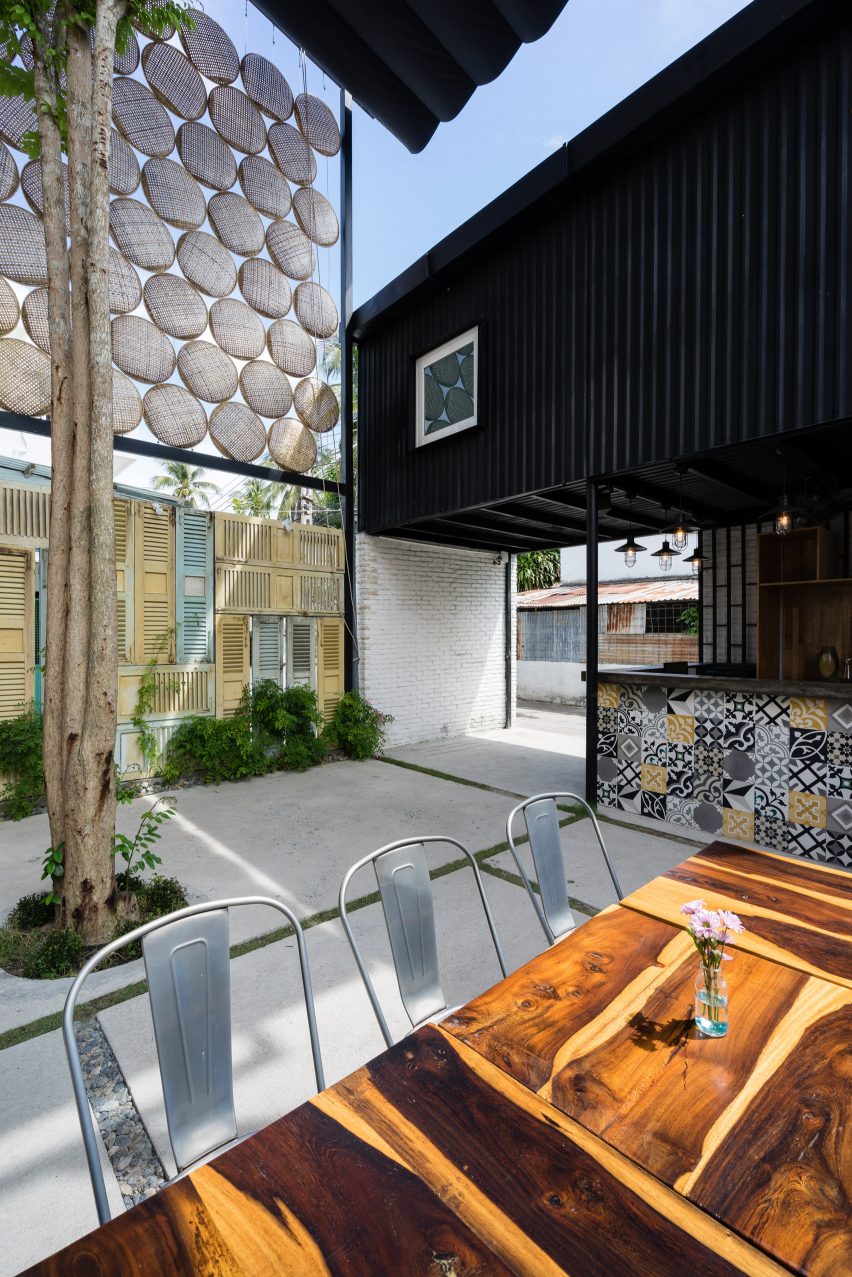
The communal area at the Ccasa Hostel is constructed using steel frames and black-painted sheet metal. It is largely open to the elements and the street, creating a casual, welcoming feel.
A screen made from flat woven baskets and a wall of recycled wooden windows were introduced to provide a reference to traditional Vietnamese architecture.
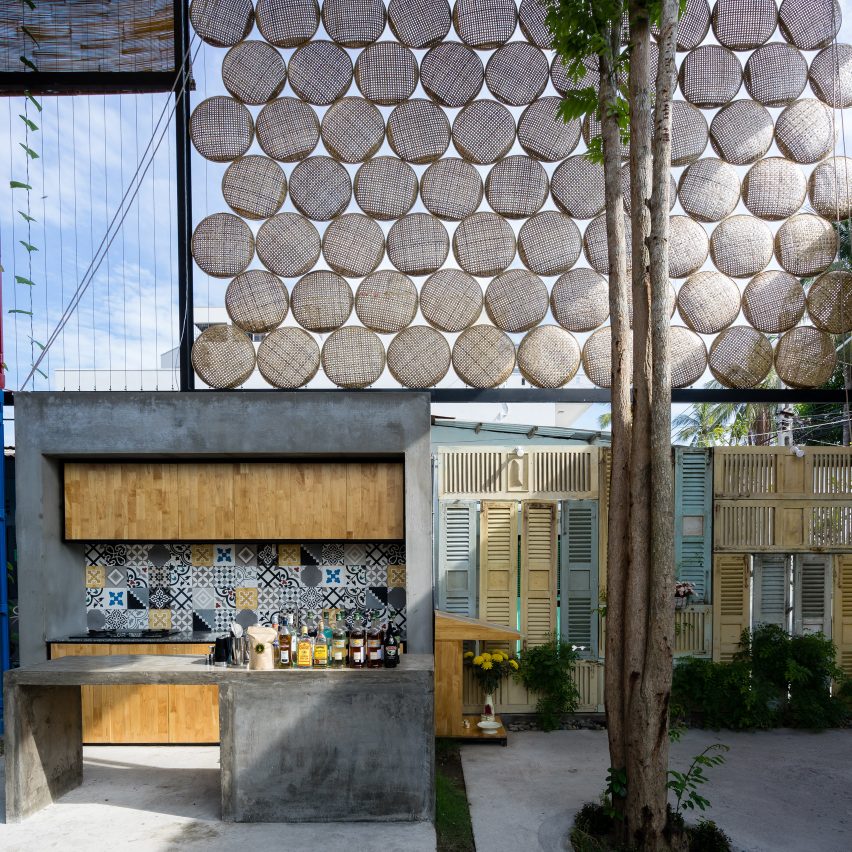
Simple bunk beds are placed around the inner walls of the containers, with curtains providing privacy and wooden boxes at the base offering storage. Patterned tiles introduce a decorative element to the spaces.
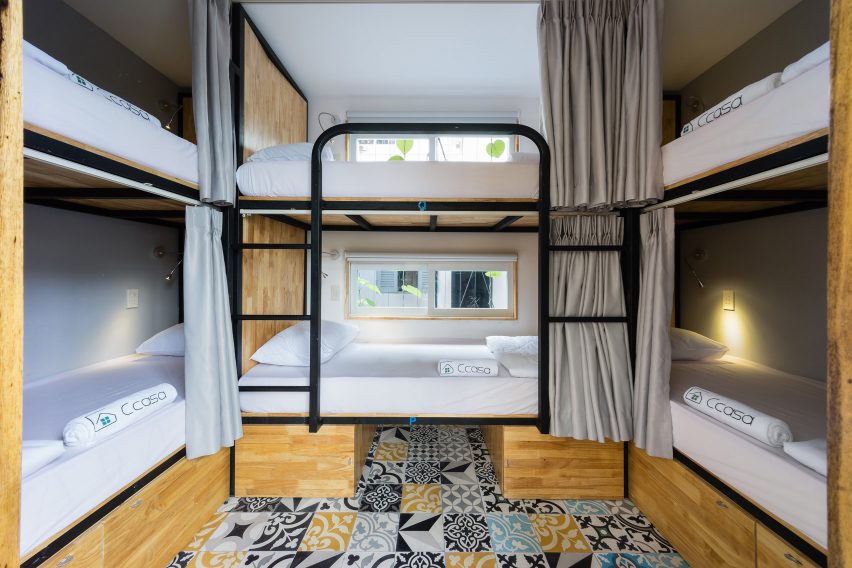
Circulation leading to the bedrooms takes the form of open-air bridges with trees growing up through the gaps or pergolas covered with climbing plants positioned alongside.

On the upper level, voids between the bridges are filled with netting to create giant hammocks where guests can lounge and relax.
The washing block was constructed using conventional white-painted bricks and concrete, with a sink made from cast cement and a wall of patterned perforated blocks allowing fresh air to pass through.
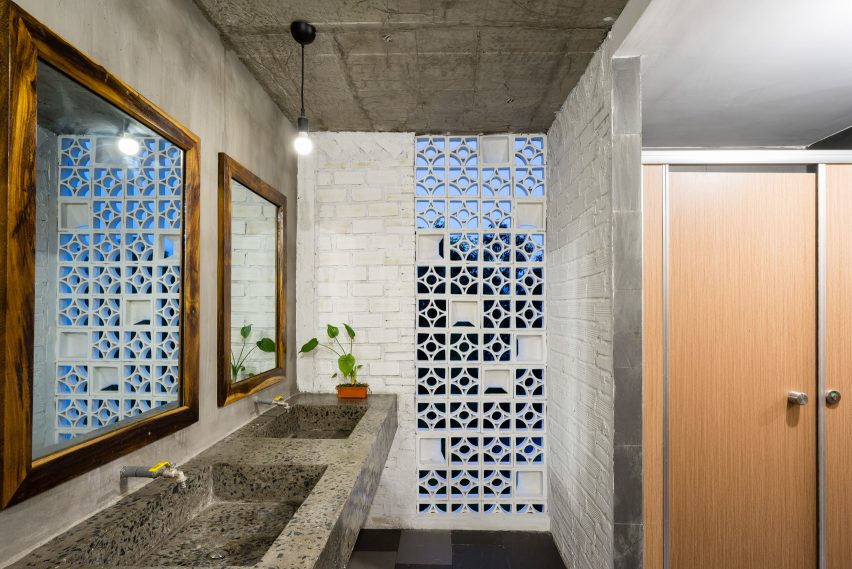
The appropriation of the containers also lends the project a distinctive, industrial aesthetic, which is accentuated by the use of materials such as cement tiles and handrails made from metal reinforcing bar.
"By using old shipping containers, steel frame and the green trees and pergola, Ccasa hostel has brought both a strong and industrial yet harmonic, natural feeling," said the architects.
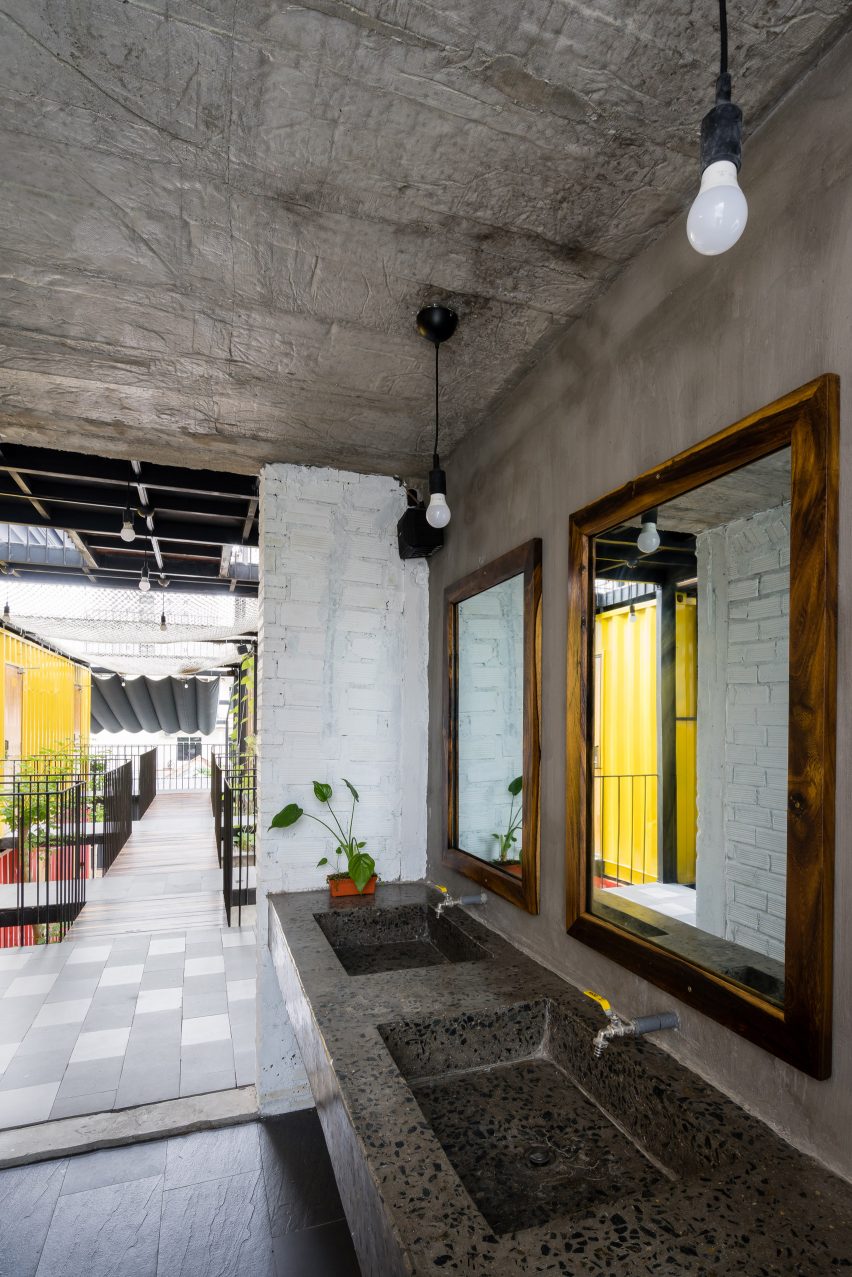
Shipping containers, which are formed of corrugated metal and usually used to transport cargo by sea or air, have become popular with architects looking for an affordable modular construction solution.
Recent projects built using containers include a floating student residence in Copenhagen harbour by BIG and a temporary pavilion in China comprising stacked layers of red and yellow boxes.
Photography is by Quang Tran.